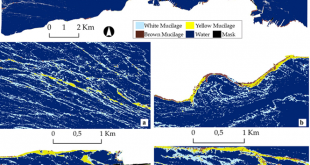Environmental Monitoring and Assessment, 189(4), Article Number: 136, DOI 10.1007/s10661-017-5818-5. (2017)
Analysis of Land Cover/Use Changes Using Landsat 5 TM Data and Indices
Ettehadi Osgouei, P., Kaya, Ş.
Abstract: Urban expansion and unprecedented rural to urban transition, along with a huge population growth, are major driving forces altering land cover/use in metropolitan areas. Many of the land cover classes such as farmlands, wetlands, forests, and bare soils have been transformed during the past years into human settlements. Identification of the city growth trends and the impact of it on the vegetation cover of an area is essential for a better understanding of the sustainability of urban development processes, both planned and unplanned. Analyzing the causes and consequences of land use dynamics helps local government, urban planners, and managers for the betterment of future plans and minimizing the negative effects.This study determined temporal changes in vegetation cover and built-up area in Istanbul (Turkey) using the normalized difference vegetation index (NDVI), soil-adjusted vegetation index (SAVI), and built-up area index (BUAI). The temporal data were based on Landsat 5 Thematic Mapper (TM) images acquired in June of 1984, 2002, 2007, 2009, and 2011. The NDVI was applied to all the Landsat images, and the resulting NDVI images were overlaid to generate an NDVI layer stack image. The same procedure was repeated using the SAVI and BUAI images. The layer stack images revealed those areas that had changed in terms of the different indices over the years. To determine temporal change trends, the values of 150 randomly selected control points were extracted from the same locations in the NDVI, SAVI, and BUAI layer stack images. The results obtained from these control points showed that vegetation cover decreased considerably because of a remarkable increase in the built-up area.

Available Online: https://link.springer.com/article/10.1007%2Fs10661-017-5818-5
 UHUZAM İTÜ – Uydu Haberleşme ve Uzaktan Algılama UYG-AR Merkezi
UHUZAM İTÜ – Uydu Haberleşme ve Uzaktan Algılama UYG-AR Merkezi 